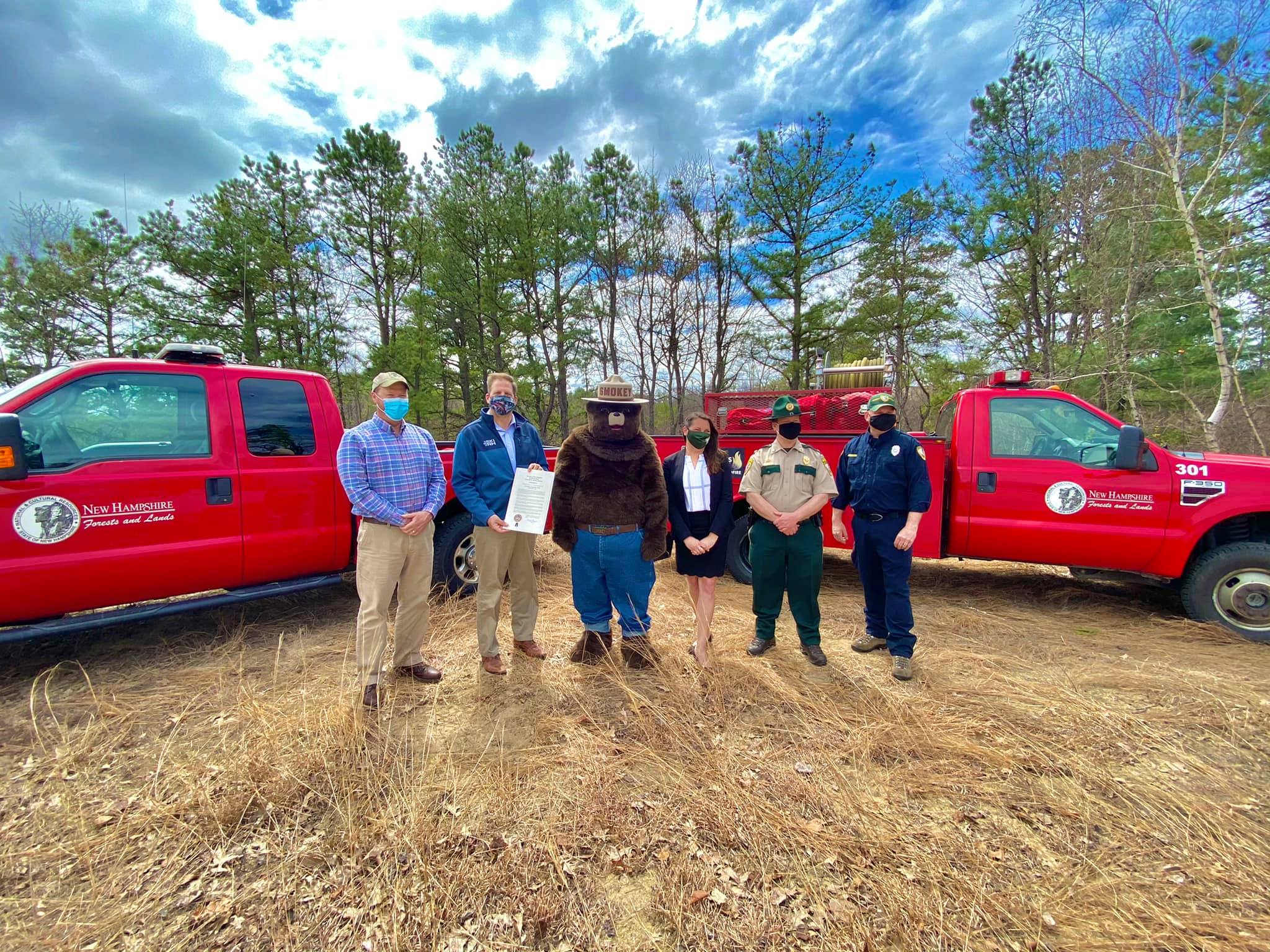Spring in NH Brings Blue Skies, Warmer Temperatures – and Wildfire Season
 Gov. Sununu with Smokey Bear and N.H. Forest Protection personnel. Picture Courtesy of Governor Sununu’s Facebook Page
Gov. Sununu with Smokey Bear and N.H. Forest Protection personnel. Picture Courtesy of Governor Sununu’s Facebook Page
Governor Chris Sununu has proclaimed April 18-24 “Wildfire Awareness Week,” part of an effort to raise the level of public consciousness about the dangers of wildfire and its impact not only on New Hampshire’s forested landscape, but also the potential impact to homes, personal property and the state’s wide variety of recreational opportunities.
Unlike other parts of the country that experience their annual increase in wildfire activity in the summer and fall, spring is wildfire season in the northeastern portion of the United States, when dry grasses, leaves and pinecones, along with fallen twigs and branches, serve as potential fuel for a wildfire.
Limited precipitation received within the past week has not significantly improved the ongoing drought conditions in New Hampshire. More than 57 percent of the state is now experiencing moderate drought conditions and the remainder of the state is classified as abnormally dry.
The heightened concern for wildfires will continue until adequate precipitation is received allowing new leaves and green vegetation to emerge.
“As we transition from winter to spring, it’s important that everyone be aware that their change in activities may alter the causes of wildfires, but not the risk,” said Capt. Douglas Miner from the N.H. Forest Protection Bureau. “Being vigilant about what we are doing outdoors – whether disposing of ash from a woodstove, having that first cookout of the season or doing something else that involves combustion – and practicing strong wildfire prevention behavior can have an enormous impact on all of us.”
Ninety percent of wildfires in New Hampshire are caused by human behavior. While brush fires and campfires are common causes, other sources include improper disposal of smoking materials, overheated engines and sparks emitted from machinery.
“New Hampshire’s forests experienced a significant increase in visitors in 2020, and overall that’s great for our health and our economy,” said Patrick Hackley, director of the N.H. Division of Forests and Lands. “Unfortunately, not everyone understands how their actions might start a wildfire and cause damage to our landscape. This proclamation serves to highlight the importance of wildfire prevention awareness.”
The state’s Forest Protection Bureau, part of the N.H. Division of Forests and Lands, is responsible for protecting 4.5 million acres of both public and private New Hampshire forestlands from the threat of wildland fire and crimes against the forest resource. This is accomplished by forest rangers, fire patrolmen, fire tower personnel and support staff as well as the forest fire wardens and deputy wardens serving in each community.
From 2016-2020, New Hampshire experienced an average of 119 wildfires impacting 276 acres annually.
The N.H. Forest Protection Bureau is part of the Department of Natural and Cultural Resources’ Division of Forests and Lands, which protects and promotes the value provided by trees, forests and natural communities. For more information about the Division of Forests and Lands and the work of its Forest Protection Bureau, visit nh.gov/nhdfl or call 603-271-2214.


